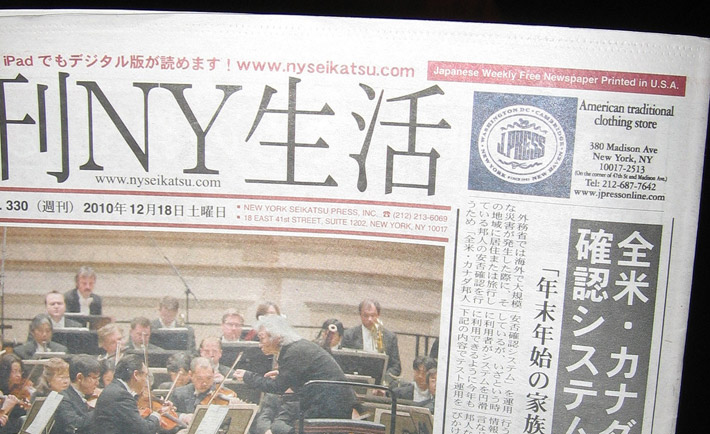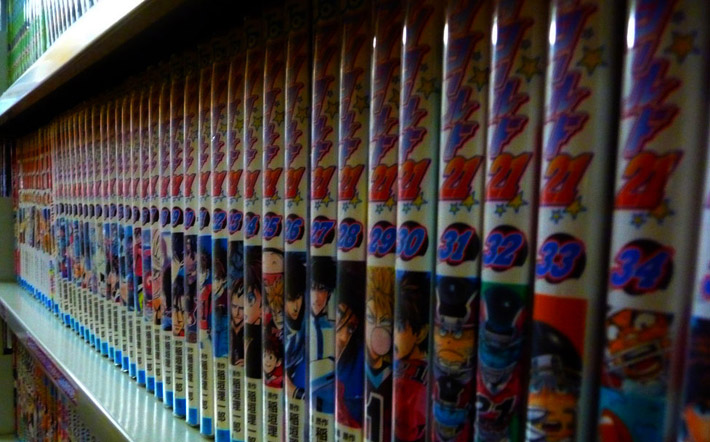Of course, there are plenty of resource out there to help intermediate and advanced learners of Japanese to practice their reading. They can use any Japanese book, manga, blog, or website and study away to their heart’s content.
For beginners, though, finding Japanese things to read that are at or around your level is a pain. Either you study what’s in your textbook (limited and often times boring) or you don’t get to study reading it much at all. You essentially have to wait until you reach a higher level in order to have something for reading practice which will slow down your reading ability in the long run.
There’s good reason that beginners don’t have as much to study with, though. Basically, it comes down to not knowing enough kanji. If you don’t know the kanji, resources options are limited, though that doesn’t mean it isn’t helpful to read. Reading teaches you grammar and how to use it. It also will help you with your kana and basic kanji fluency (which normally takes too long in my opinion without enough early Japanese reading practice). You’ll also learn a lot of useful, common words, which of course is useful.
Since it’s normally pretty hard for beginners to find reading resources (and because I get this email like every day, it seems), I thought it would be good to put together a list of resources for beginners to study with. I’ll list them below and write a little bit about each including some suggestions on how to study with them. If you have any additional suggestions, please post them on Twitter.
Have fun!
Japanese Children’s Newspapers

You probably know about newspapers for adults, but did you know about newspapers just for children? They tend to talk about slightly more cheerful things and are written in a much more simple fashion (easier kanji, easier words, easier everything), which is good for people who are still beginners of Japanese. There are some problems, though. Furigana is prevalent in a lot of them which kind of defeats the purpose in my opinion. I’ll be sure to note these ones down as well as tell you of a workaround to get rid of the furigana when it’s there.
Kodomo Asahi

Heralding from the adult Asahi Shinbun comes “Kodomo Asahi,” a version of their newspaper made for children. There aren’t a ton of articles here, but definitely plenty enough to keep any beginner busy on a fairly regular basis. There is a “elementary school” section and a “middle school” section.

Both are fairly basic, but of course the elementary school one is going to be a lot simpler. Between the two, there’s probably a new article every couple of days, especially when you consider the other additional sections available.
I think the level of kanji and vocab here is fairly good for a beginner. They also don’t do the furigana thing, which is nicer for your studies. In terms of the newspapers, this is a pretty darn good one. That being said, they don’t update every day, so you’ll want something else if you’re studying very regularly.
Visit: Kodomo Asahi
NHK News Web Easy

Last but not least is News Web Easy by NHK. Not only do they provide news using simple kanji and vocab, but they also provide audio too, which means you can read along and do some language shadowing (or something along those lines).

Update: NHK News Web Easy now has a button at the top of every article that lets you toggle furigana on and off. Awesome! This makes News Web Easy an even better resource… probably the best out of these three.
There’s three or four “Easy” articles posted up every day, so you have plenty of opportunity to practice. If you’re feeling particularly good looking, as well, you can also see the original article. Just click “一般のニュース原稿はこちら” and you’ll be taken to the place from which your Easy article was painfully birthed out of.
Visit: NHK News Web Easy
Japanese Children’s Stories

Although Japanese children’s stories don’t come up with new content every day like the news does they are a nice way to get your beginner Japanese reading practice in. Since so many children’s stories are from a million years ago, you can find them for free on the internet as well. Of course, if you want physical copies you could go out and buy them / order them off of Kinokuniya or some other website, but I think the digital version will do just fine, not to mention you can print them out and take notes.
Here are some Japanese Children’s Book resources that I thought were good.
Traditional Japanese Children’s Stories

This website was made by Tom Ray for his own studies in Japanese. He decided to make it available to the public to help others out as well, which is awesome.
He took a bunch of traditional Japanese children’s stories and typed them out in Japanese. Then, he added in the English translation, line-by-line. Afterwards, he provides vocabulary explanations as well. A lot of the work is done for you, which can be good or bad, though it’s definitely an educational way to go through Japanese stories while practicing reading. You’ll find the sentence-by-sentence format particularly helpful, I think.
The pages are particularly printable, as well, meaning you can study and take notes as needed.
Visit: Traditional Japanese Children’s Stories
Fuku Musume’s Fairy Tale Collection

This Japanese fairy tale website is organized into various categories, from “famous Japanese stories” to “Scary Japanese stories” to “stories from around the world.”
There’s a lot of fairy tales here, plenty to keep any beginner busy for quite a while (and enough to get you much better at reading). A fair number of the stories also have audio to go along with them, meaning you can use the audio to help you to read along (and get the pronunciation right). Although not every story has this, you should take advantage of the ones that do. Reading out loud and mimicking a native speaker is always a good thing to do when you can, especially when you’re first starting out.
There’s probably 400 or 500 stories here, so that’s enough to read one every day for a year plus. If you do that, you’ll surely get better at reading Japanese. Remember, it’s all about consistency if you want to get better!
Visit: Fuku Musume’s Fairy Tail Collection
Fantajikan
Although Fantajikan has a site with stories on it, they’re more about audio than anything else. That’s why the YouTube channel is what makes this website worth adding to this list. The YouTube channel doesn’t have all the stories from the site, but I do think it’s more useful for beginner’s practice.
Included in each video is images showing what’s going on, a narration of the story, and Japanese text showing what the narrator is saying (this is where the reading practice comes in). The nicest part about these is the images in the video, though. They show the context of what’s going on adding another element to your practice. You just get a little more feedback this way.
Visit: Fantajikan YouTube
Children’s Manga

Manga is another way to get in Japanese reading practice. For beginners, of course, children’s manga is what’s going to be good… things like Doraemon, Dragonball Z, and so on. There are also some manga that aren’t necessarily for children but provide furigana for the tough stuff and none for the easy stuff (fine for beginner practice), though you’ll have to poke around to find the perfect level of this for you.
In general, though, I’d recommend only children’s manga for beginners. It will be simple enough to read yet difficult enough to make you struggle (and learn). You’ll also get images to help with context, which will help you to understand more how the words and grammar are working together to form Japanese.
As for finding manga? If you’re lucky, you’ll live near a Japanese bookstore (Kinokuniya, for example). If you’re not so lucky, you can always order off Amazon or some dropshipping service. If you live in Japan or visit Japan, though, children’s manga can be found for super cheap especially if you get something used. It’s not particularly heavy to carry, either. Just get it on the last day of your trip.
What Else Can Beginners Use for Japanese Reading Practice?

While I started by talking about how Japanese reading practice is very limited for beginners, I hope you’ve come away with the feeling that there are options out there for you. That being said, there’s probably plenty more to add to this list.
There’s textbooks with a ton of reading practice in them, workbooks that go with the lessons, sites like JapanesePod101 that have text with their audio lessons, Japanese websites for children, Japanese blogs that use simple Japanese, and I’m sure much, much more. The more you look, the more you’ll end up finding. Hard part is actually looking, though, so hopefully I did some of that work for you just now.
Now, if you’re finding that you’re having trouble studying/reading with any of these, it probably comes down to your kana and kanji level. If this is the case, consider checking out our ultimate guide for your hiragana learning. If it’s kanji you’re having trouble reading, check out our very own WaniKani. It’s still in beta at the moment of writing this, but if you sign up for the invite list on the homepage you’ll get an invite soon.
So my question to you, is: What beginner’s Japanese reading resources do you use or recommend? Help the Japanese beginners who read this site and give out some of your recommendations on Twitter. If you’re a Japanese beginner you should read these. People often post much smarter things there than I write in the actual article, har. v(;´༎ຶД༎ຶ`)v
